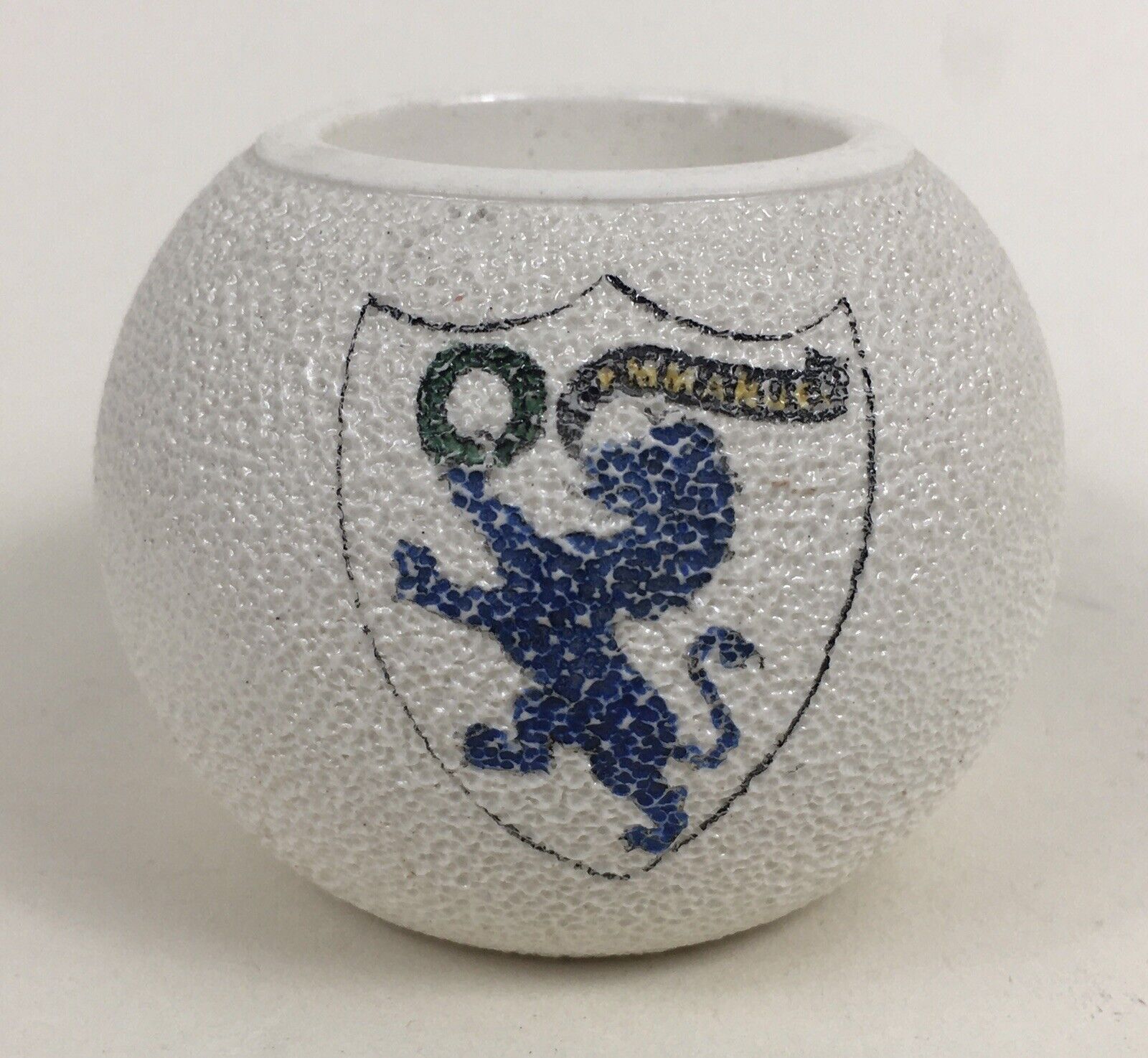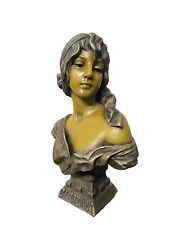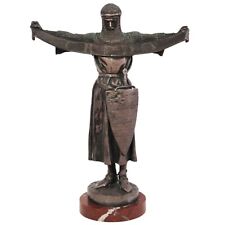When you click on links to various merchants on this site and make a purchase, this can result in this site earning a commission. Affiliate programs and affiliations include, but are not limited to, the eBay Partner Network.
Rare Antique Emmanuel College, Cambridge University, Ceramic Match Striker, Holder, Carlton Ware - Staffordshire, UK
Dated around 1900 - 1920.
7cm diameter
I cannot find another example currently available !
Very good condition for age, with some superficial wear and discolouration.
Emmanuel College was founded in 1584, on the site of a Dominican priory, by Sir Walter Mildmay, Chancellor of the Exchequer to Elizabeth I. Parts of the monastic buildings remain today: for example the Hall is built on the foundations of the nave of the Dominicans’ church, and the boundary wall to the priory, with its distinctive pitched coping divides the Paddock from Park Terrace. The pond in the Paddock is on the site of the friars’ fishpond.
Sir Walter was a Puritan and he intended his college to educate protestant preachers. Emmanuel was thus distinctive and grew rapidly so that by the 1620s it was the largest college in Cambridge. Its chapel reflected its nonconformity in pointing north-south, a deliberate statement that there was no need to point west-east. Surplices were not worn and communion was received sitting down (rather than kneeling): practices that attracted criticism at Hampton Court in 1603. Five Fellows and members of the College were involved in the new translation of the Authorised Version of the Bible, including the Master, Laurence Chaderton: a number second only to Trinity. Perhaps surprisingly given the nonconformists' reputation, the Fellows knew how to relax, too, and outraged Lancelot Andrews, future Master of Pembroke, for playing bowls in the Fellows’ garden on Sundays.
In the 1630s, many Puritan clergy went into exile to avoid persecution. Of the first 100 graduates who migrated to New England fully one third were Emmanuel men. Cambridge in Massachusetts was named in compliment to an Emmanuel preacher Thomas Shepherd; another, John Harvard (BA 1632), emigrated in 1637. He died the following year and left his books and half his estate to the new college that was thus to bear his name and become the first American University.
In 1677, the original chapel (now the Old Library) was replaced by the present one, designed (with the cloister and gallery) by Sir Christopher Wren. The promoter of this building was William Sancroft, Master 1662-5 and then Dean of St Paul’s Cathedral, where he worked closely with Wren both before and after the Fire of London. Sancroft was later Archbishop of Canterbury and in 1693 he gave his 5000-volume library, still intact today and shelved in its original order.
Other early Emmanuel men included John Wallis (who invented logarithms to base 10) and Jeremiah Horrox (who first accurately predicted the Transit of Venus), both notable precursors of Newton. In the 1640s Sir William Temple, diplomat, statesman and essayist was a student at the College. He was to employ Jonathan Swift as an amanuensis (whose Gulliver came to Emmanuel).
Among eighteenth-century Fellows were William Law, who inspired John Wesley, and the literary scholar Richard Farmer (Master 1775-97), who while he was still a Fellow entertained Samuel Johnson in the College. During his Mastership, the Fellows’ parlour was a lively part of the Cambridge social scene. One of those who enjoyed the parlour, and its tradition of betting, was Thomas Young, here from 1797 to 1799, who is famous for work on both Egyptian hieroglyphs and the wave-theory of light (allegedly discovered by observing ripples made by swans on the pond in the Paddock). While Young won many bets against his colleagues, he lost the one that he would produce a pamphlet on the theory of sound ‘more satisfactory than anything that has already appeared’ before he took his BA degree.
As the College expanded in the nineteenth century more rooms were needed, and New Court was built in 1824. One of the most significant changes in the following decades were the new University and College statutes, which had the consequence that from 1861 Fellows were allowed to marry for the first time. The first so to do was the New Testament scholar F. J. A. Hort, who became a Fellow in 1871. In the years running up to the First World War, Sir Frederick Gowland Hopkins, who won the Nobel Prize for his discovery of vitamins, joined the Fellowship. Leonard Stokes designed College lecture rooms (now the Library) in 1910 and then North Court, which was opened as war broke out in 1914 and was first occupied by the Royal Fusiliers.
Two others who were to become Nobel laureates followed Hopkins in the twentieth century. First was Ronald Norrish, who came up in 1919; in 1945, he was joined by a research student, George Porter, and they were jointly awarded the prize in 1967 for their work on photochemistry. The Second World War was characterised by short courses, rationing and growing vegetables in the Paddock. Since then, the College has changed dramatically. Students are now legally adults, gate hours have been abolished and landladies are no more (the College accommodates all undergraduates, over two-thirds on the main site, and many graduates). Most significantly, the College is now fully mixed, with the first female undergraduates coming up in 1979. Several new buildings have been erected since the War: the Master’s Lodge was replaced in 1964, South Court was opened in 1966, HM The Queen opened the Queen’s Building in 1995, the Library was extended in 2010 as was South Court in 2013. The College marked its quatercentenary in 1984 by the purchase of Park Terrace from Jesus College.
Emmanuel today has a Master and governing body of around 60, the great majority of whom also hold University teaching offices. There are about 500 undergraduates, reading almost every subject taught within the University, and over 90% come from the UK or EU. This percentage declines to about 60% for the graduate students, of whom there are over 150.









